UnBroken at Camden Inspire 2025 proffered salvaged stories and second lives in design
by Asmita SinghOct 04, 2025
•make your fridays matter with a well-read weekend
by Aarthi MohanPublished on : Aug 09, 2024
London-based multidisciplinary artist and designer Christopher Kelly has long navigated the complexities of neurodiversity, shaped by his experiences with ADHD and traits of autism. These challenges, compounded by his queer identity, often made conventional environments overwhelming, which led him to seek solace in art, a medium to channel and express his sensitivities. This creative refuge led to the Interwoven project, a deep exploration of his inner world through textile sculptures. Now in its second chapter, the series delves deeper into Kelly's narrative, with each piece reflecting his journey of transformation and self-acceptance.
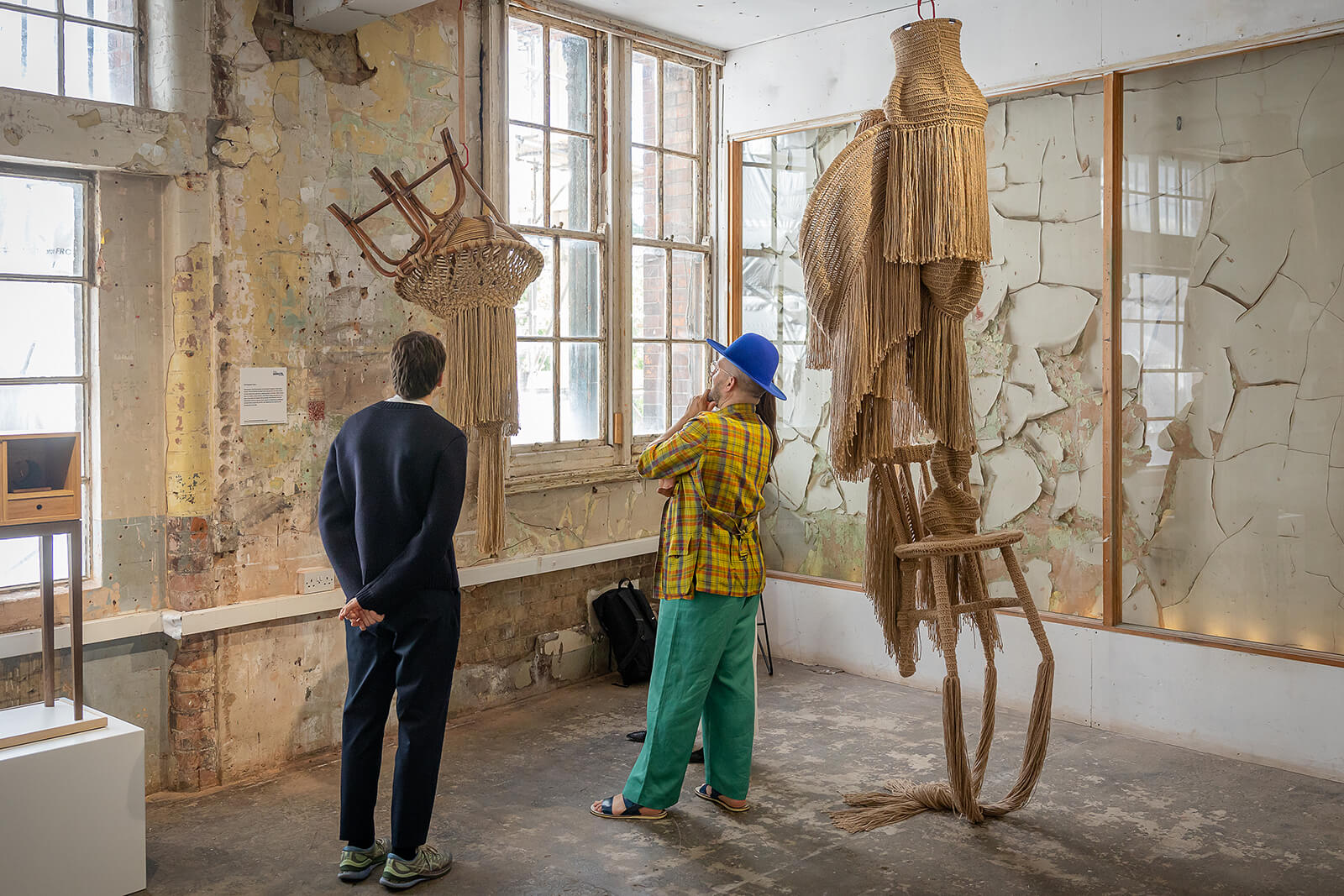
Being on the neurodivergent spectrum means having a brain that functions differently from the norm, leading to varied ways of thinking, learning and processing information. Interwoven is a creative expression rooted in these differences, brought to life through found objects, educational workshops and community engagement. The heart of the project lies in its sculptural output, where each piece is meticulously crafted from natural jute twine, employing crochet, macramé and other weaving techniques. These pieces blend the intricate facets of neurodiversity by mirroring its unique cognitive patterns in the craftsmanship, where each twist and knot reflects the artist’s internal experiences making them emotionally resonant and visually compelling.
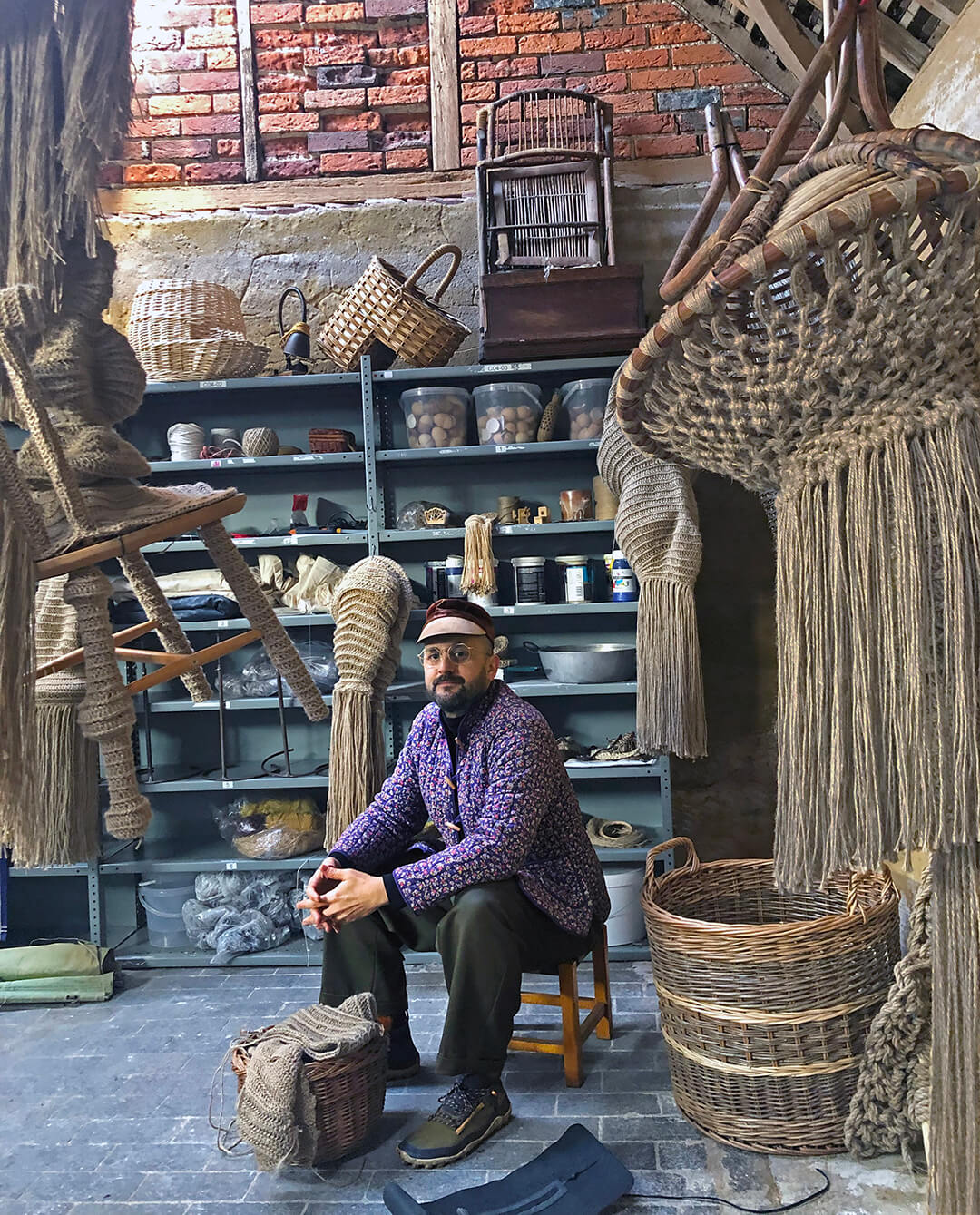
With over two decades of experience across sculpture, craft, design and prop making, the British designer’s philosophy is deeply rooted in his background. His career has seen him working as a prop designer, art director and educator, with notable projects ranging from creating a giant polar bear marionette for Greenpeace to collaborations with institutions like the V&A Museum and the Barbican. His unisex fashion label, Théâtre de la Mode, gained international recognition, showcasing his talent for merging fashion and film with installations, a combination that earned him the Dazed & Confused Fashion in Film Award and the Tribeca Fashion Film Award.
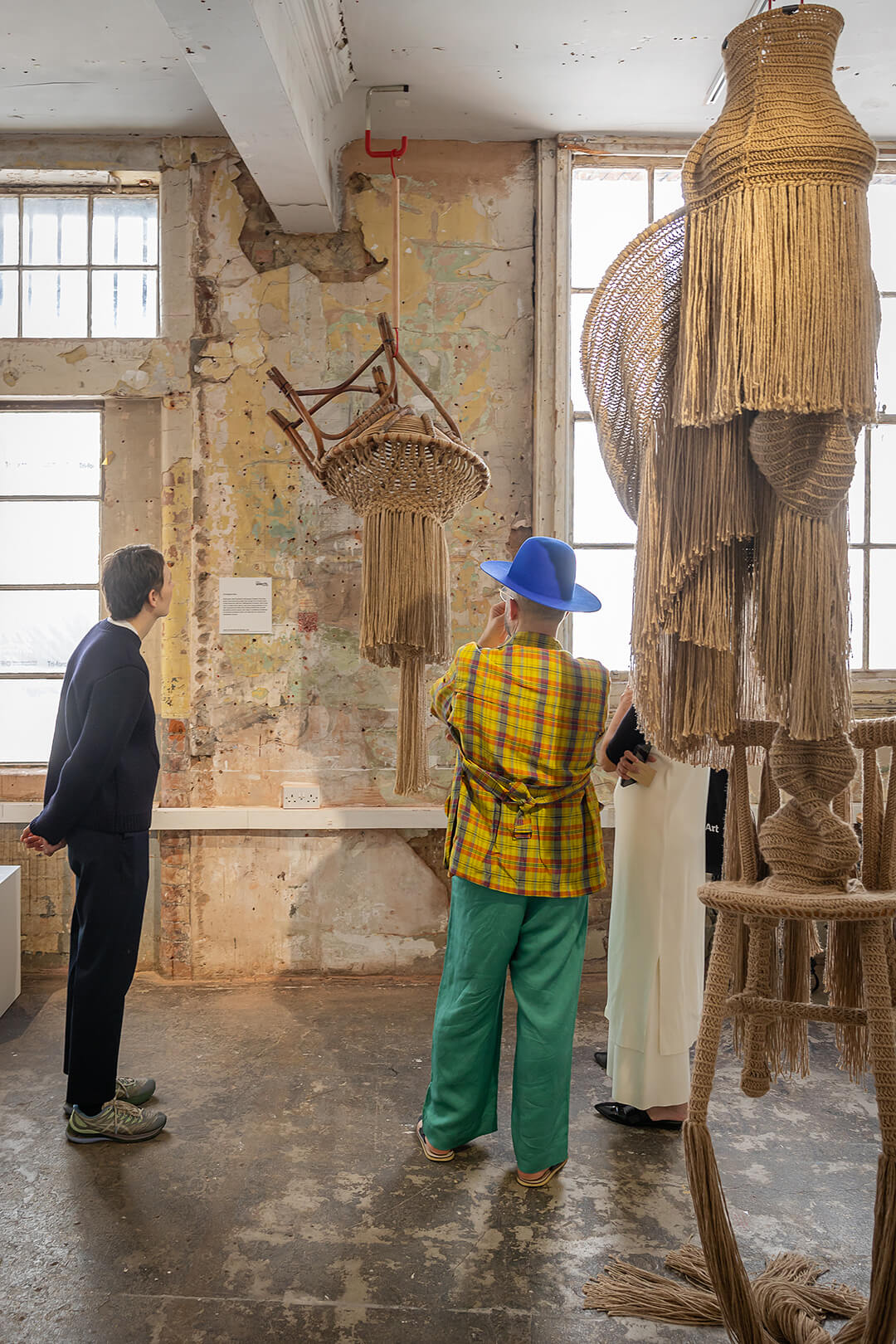
During a period of deep self-discovery six years ago, the British artist was diagnosed with ADHD, a moment that prompted him to explore how his neurodiversity influenced his artistic practice. The repetitive nature of his work became a crucial way to manage his hyperactivity. This realisation took on new significance during the lockdown when he was grappling with prolonged COVID and the physical constraints it imposed where he sought an outlet for his restless energy. Crocheting began as a small, therapeutic activity, but it quickly grew as he instinctively created his first bold, round sculpture using garden twine instead of traditional yarn.
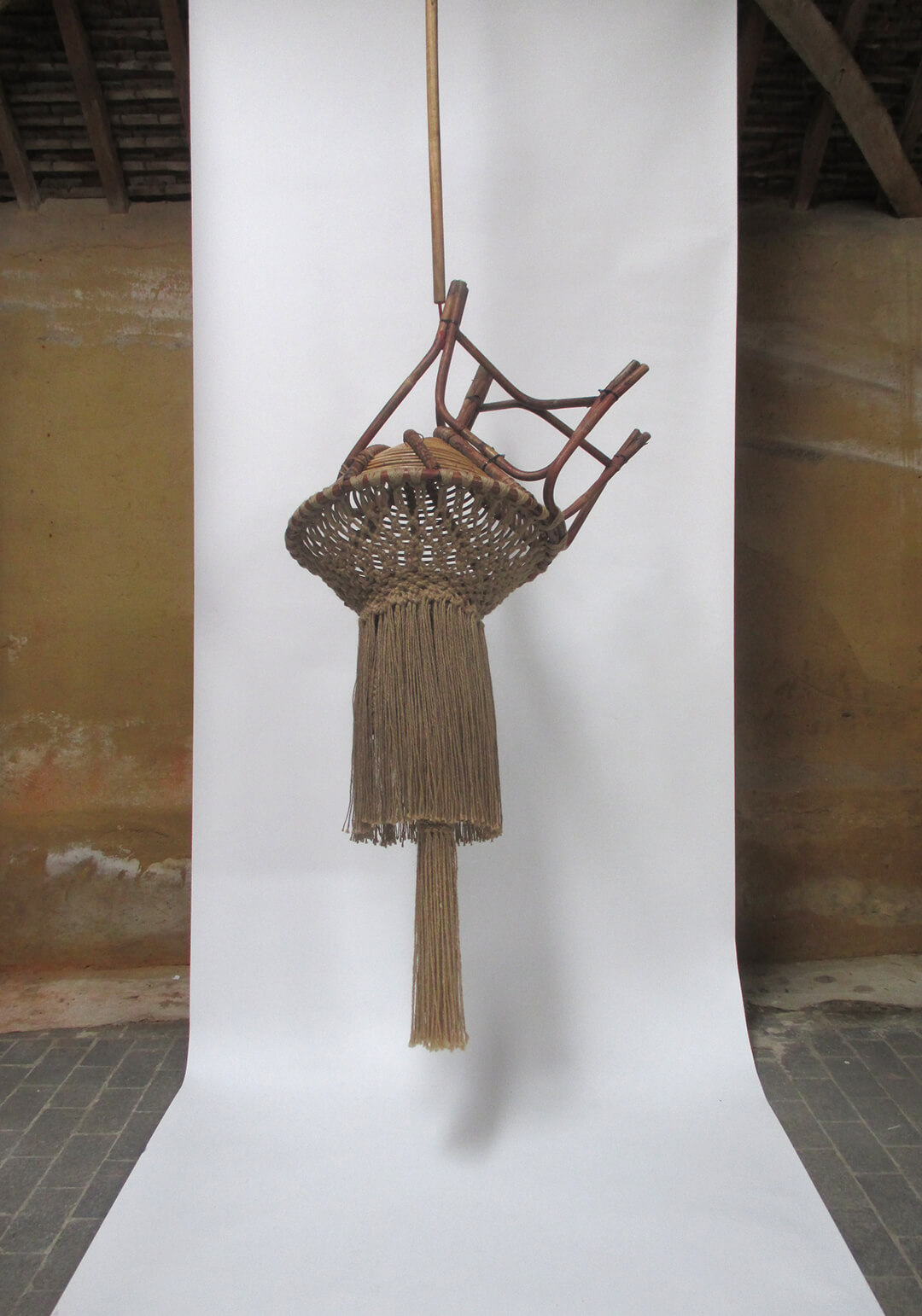
This period also saw Kelly delving into research on ADHD and its related conditions, a journey that deepened his understanding of his own cognitive landscape. Drawing inspiration from artists like Nick Cave and Bridget Riley, Kelly’s crochet sculptures evolved into the Interwoven project; tangible, expressive forms that channel Kelly’s inner world and creative energy.
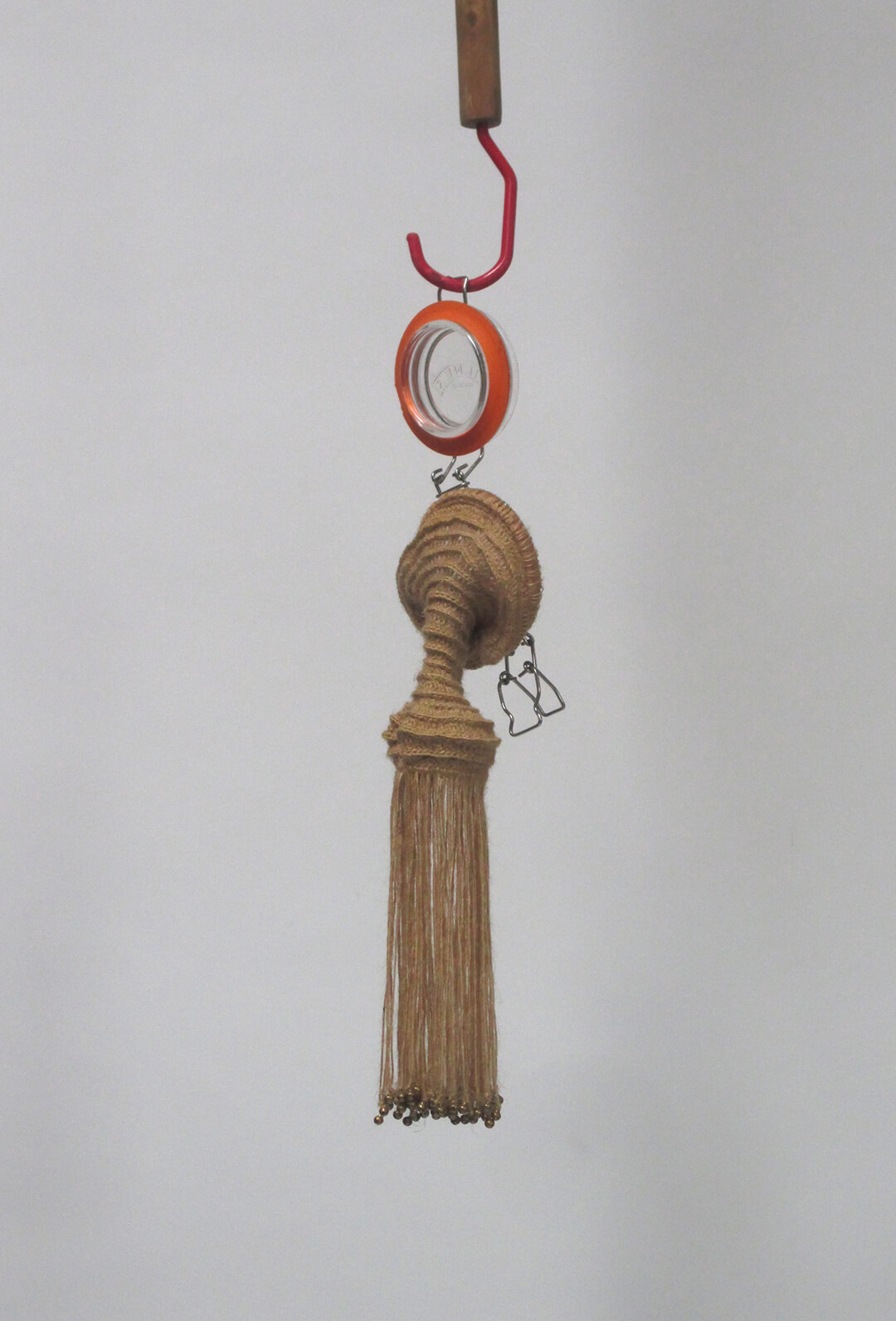
The series is structured into two chapters, each exploring different aspects of the designer’s neurodivergent traits. Chapter 1, Masking, centred on crocheted works, explores the theme of adapting and transforming in social interactions and settings. These pieces are more uniform and singular, symbolising the constant adjustments the designer makes to blend into a neurotypical world. With support from the Arts Council England, they were exhibited at Central Saint Martin’s Museum. This chapter examines the various "masks" Kelly wears in social interactions, with each piece reflecting the nuanced ways in which he navigates these experiences.
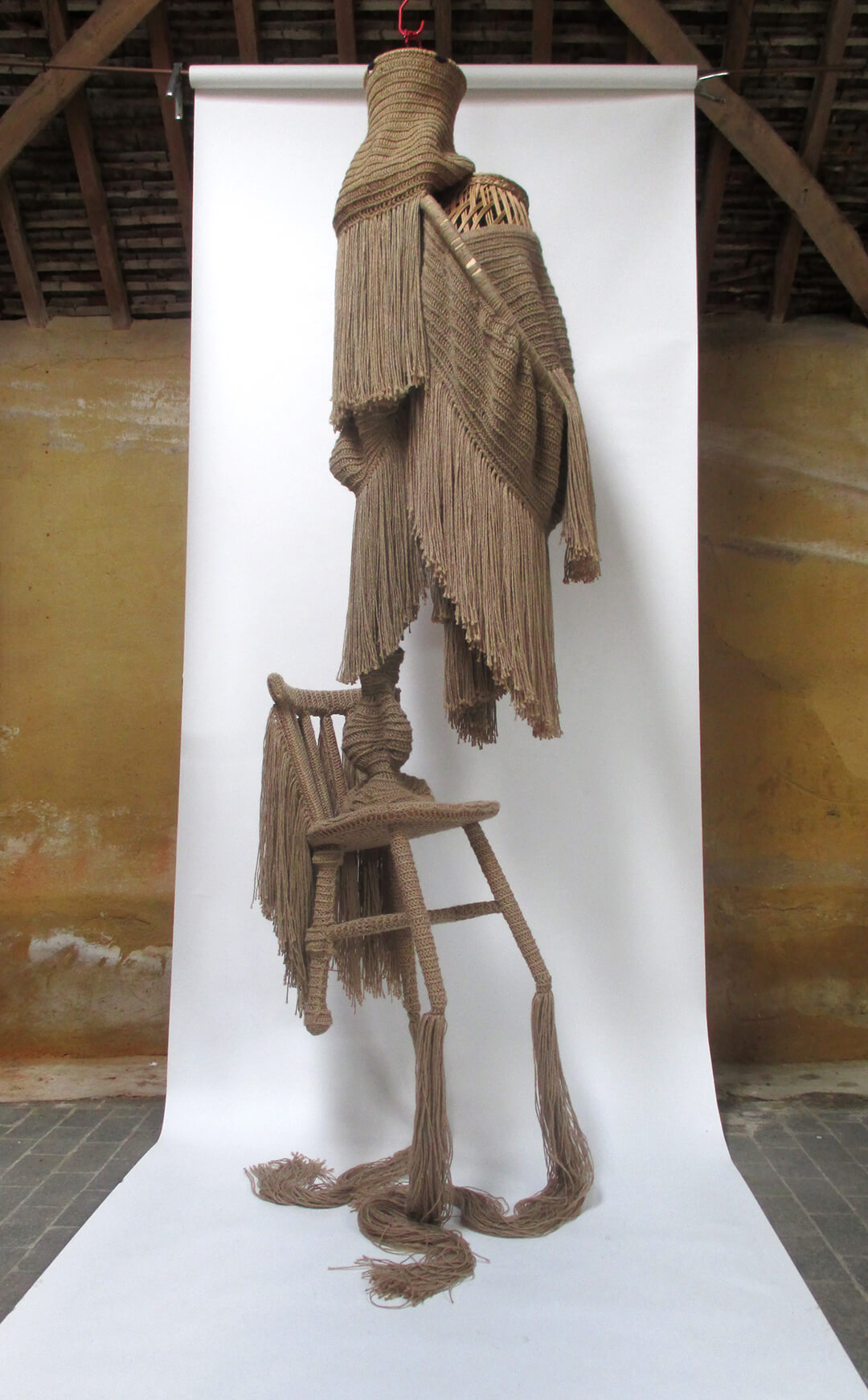
Chapter No. 2, Dis/Functional, marks a shift in the series, incorporating found objects, often discarded or deemed dysfunctional, into sculptures. This chapter explores the sensory overload that is a frequent neurodivergent struggle. The pieces are larger and more dynamic, with varying scales from 20 cm miniatures to 5-meter tall works. These sculpture art pieces on the wall or hung from the ceiling, create an immersive environment that echoes the intensity of Kelly’s experiences.
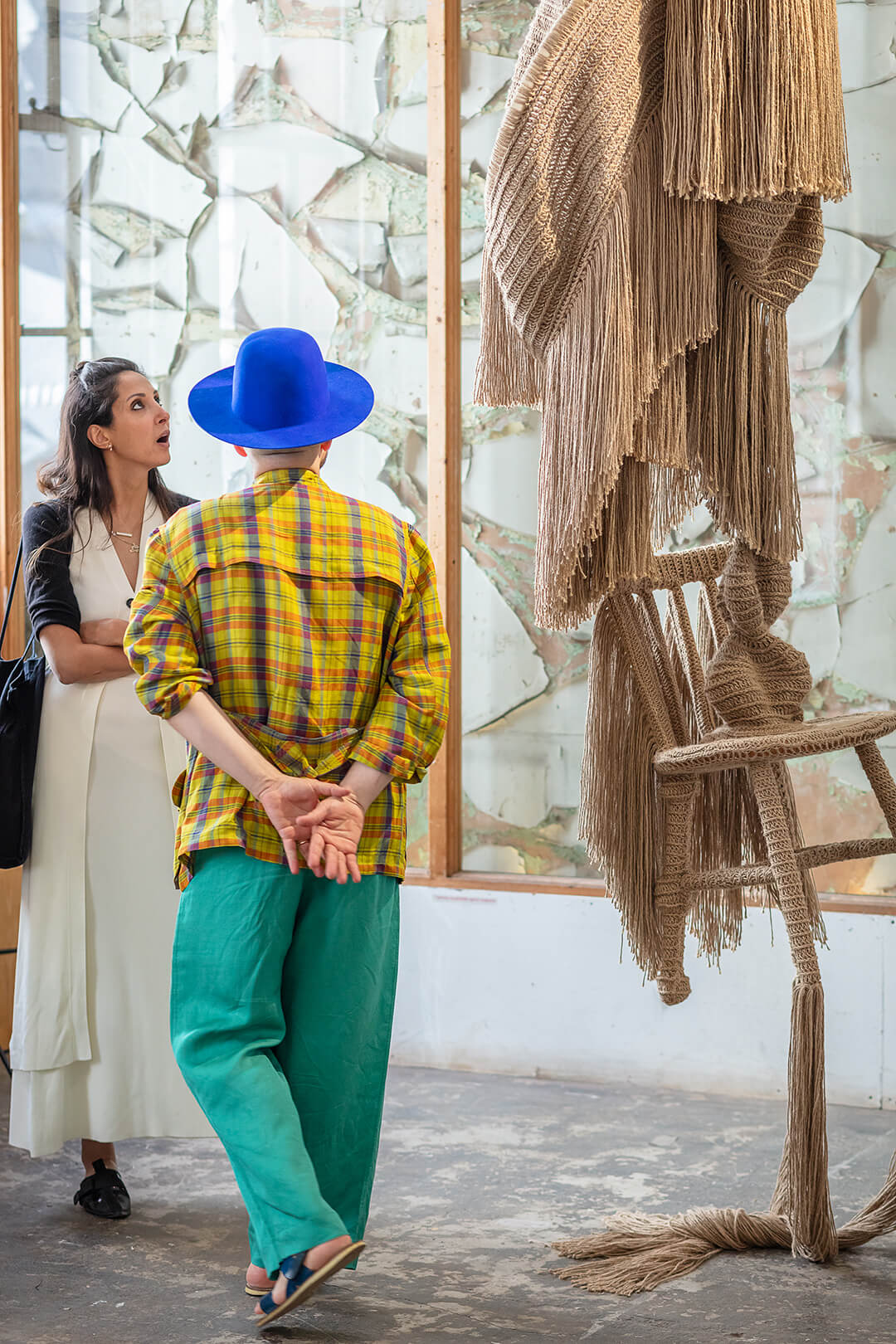
The choice to use found objects was deliberate. As highlighted in the press release, Kelly shares, "I wanted to create pieces that envelop seemingly functional objects—or rather, dysfunctional discarded objects. The crochet would usurp their function or transform it into something more beautiful, more absorbing in some way." This instinctive process is at the core of chapter 2, where Kelly allows the sculptures to grow organically, guided by the materials and the emotions they evoke.
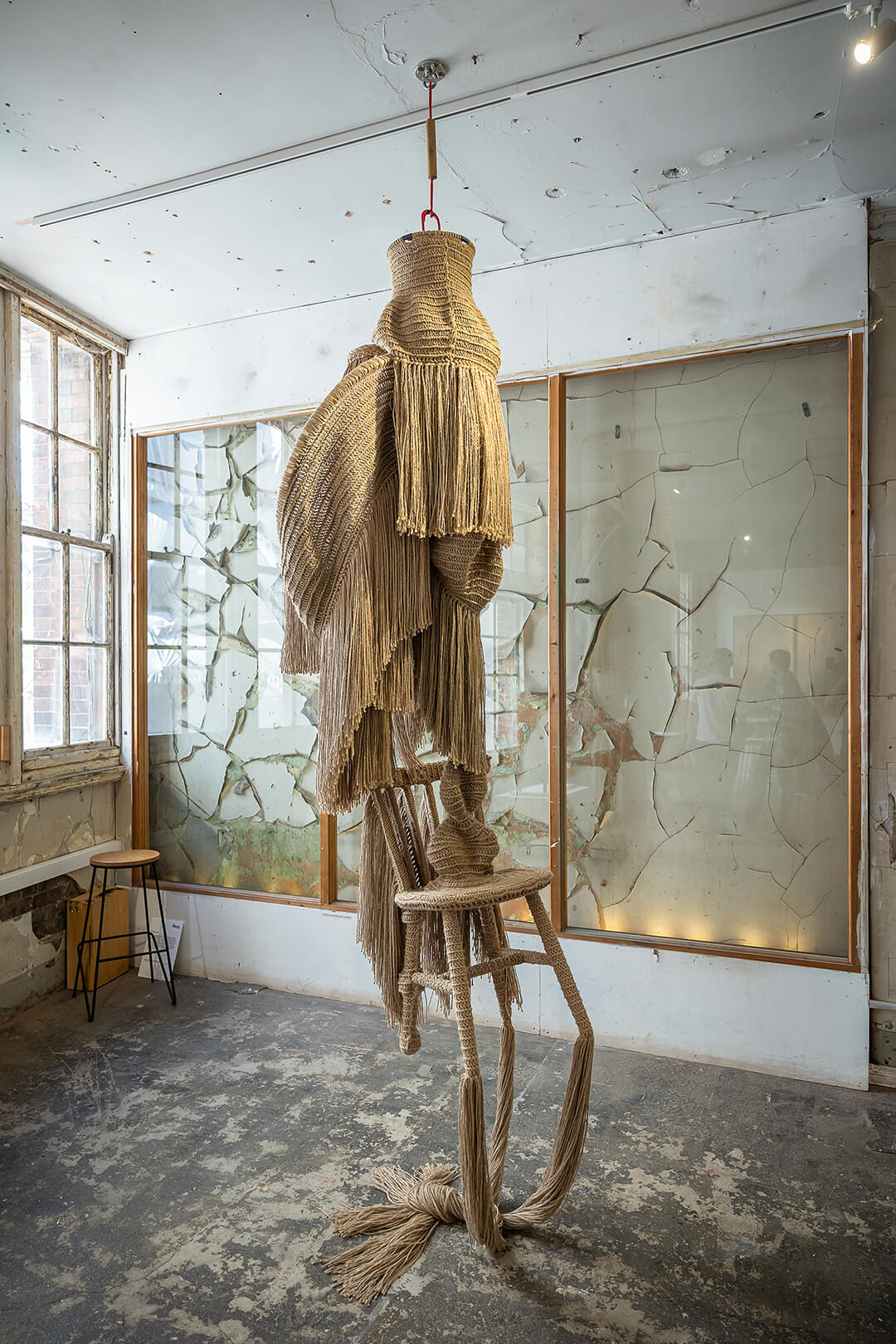
One of the central pieces in the collection is Dysfunctional No. 1 which embodies this approach. It is constructed from multiple fused components, including a broken basket found in a vintage shop and a chair with a wonky leg discovered in a charity shop. These objects, once functional but now discarded, are enveloped in crochet, their original purposes transformed into something new and unexpected.
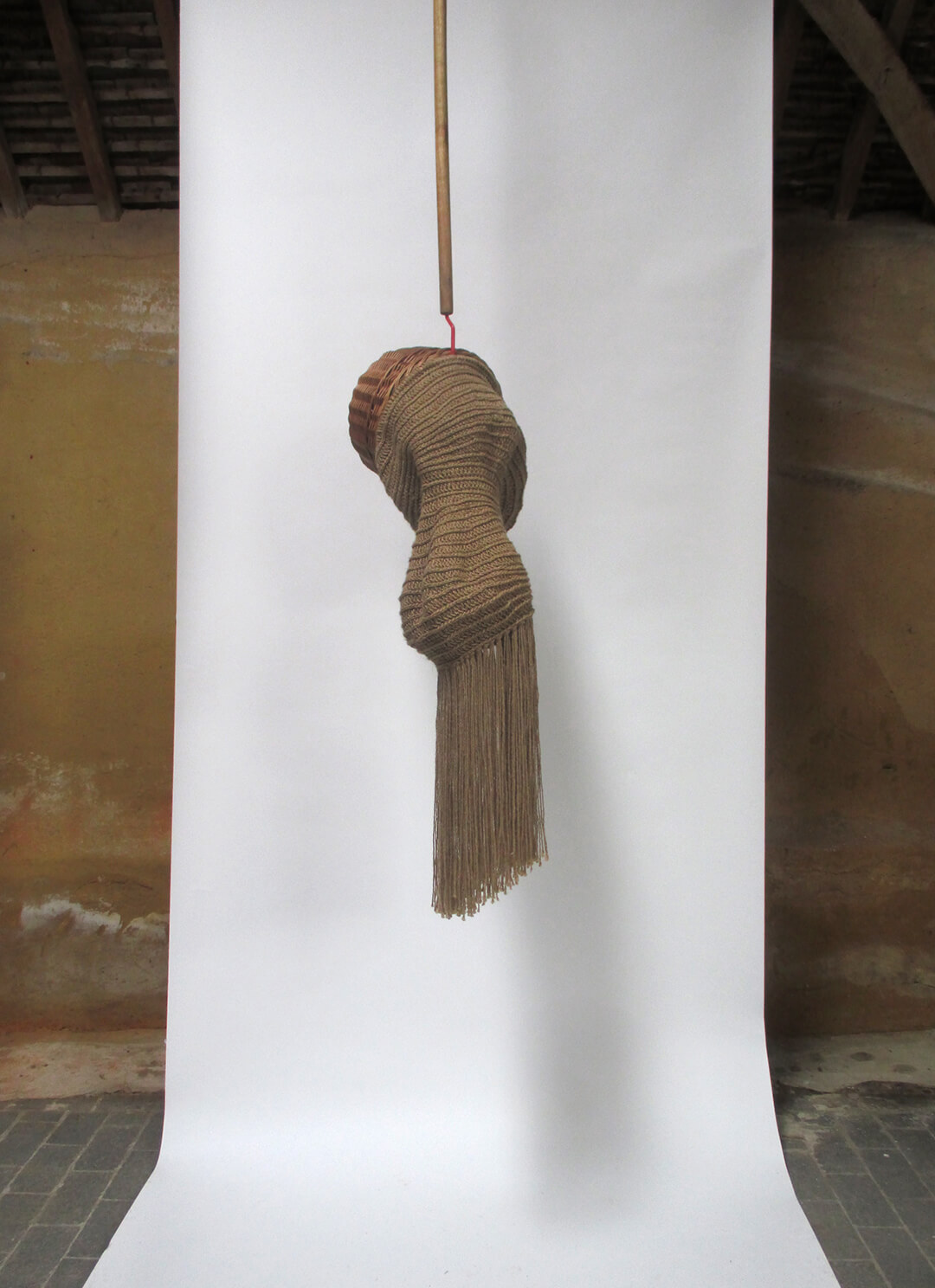
Other pieces employ additional techniques, such as macramé and weaving, used selectively based on the objects integrated into the sculptures. For example, a basket found in a vintage shop, partly broken and crafted using a French basketry technique, was chosen for its unique character. This basket, like many materials, had outlived its functional life and was repurposed within the sculpture; its dysfunctionality was a central element of the artwork.
As the piece extends downward, crochet forms of various sizes, created with large wooden hoops, emerge interlinked through intricate patterns. These are supported by an internal wooden structure to manage their weight. Tassels, added to the forms, imbue the pieces with movement and life, transforming what might be static objects into dynamic, organic forms.
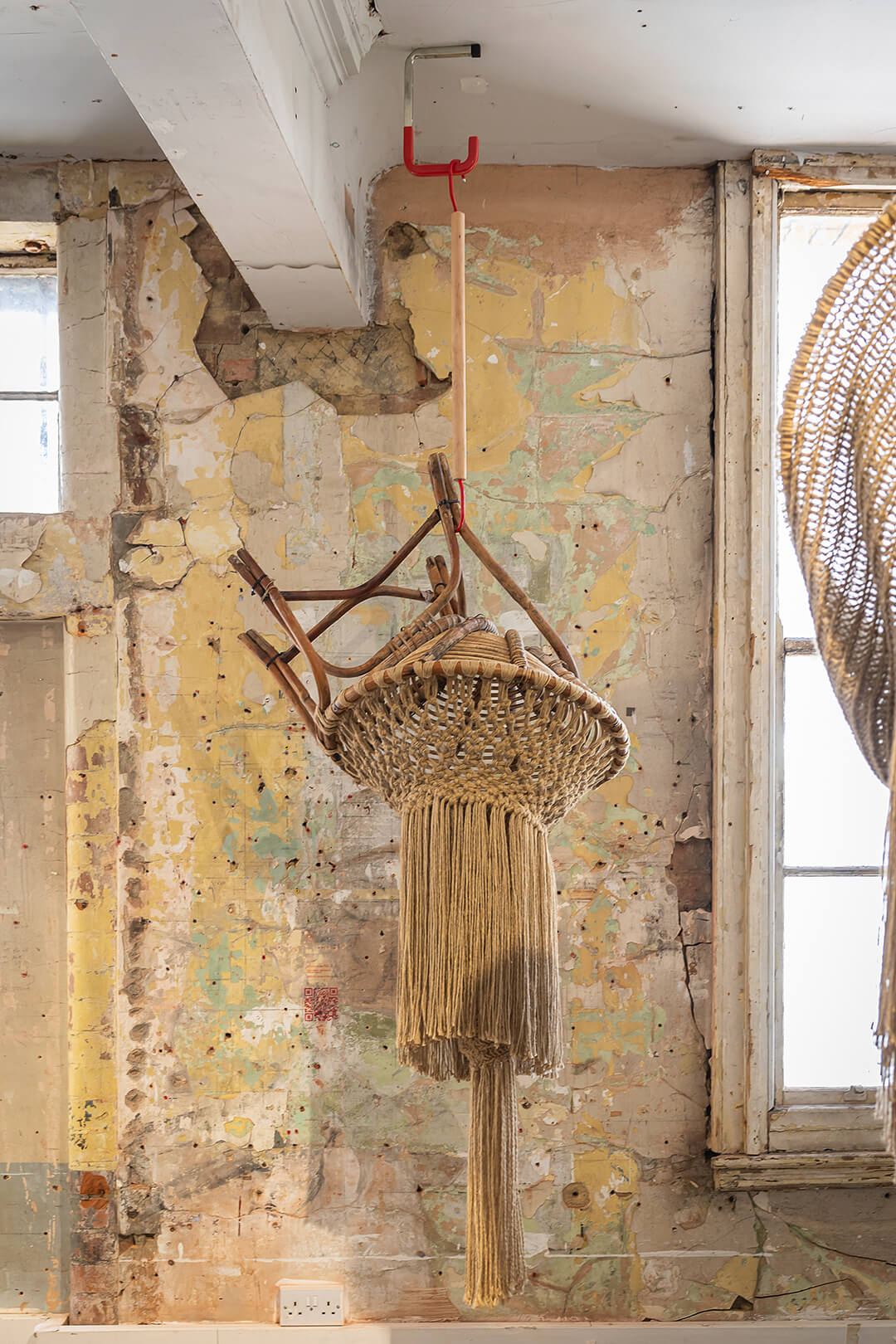
A particularly striking element in the collection is a hardback chair that Kelly found in a charity shop. The chair, with a hand-scrawled sign reading, "One wonky leg, £5 to a good home," caught his eye immediately. Like other objects in the series, the chair is enveloped in crochet, creating a second skin that adds a new layer that not only hides the flaws but also highlights them. Both correct and celebrate its imperfections. The legs of the chair are adorned with long tassels, with one leg featuring an undulating form, turning the chair’s dysfunctionality into a point of interest and beauty.
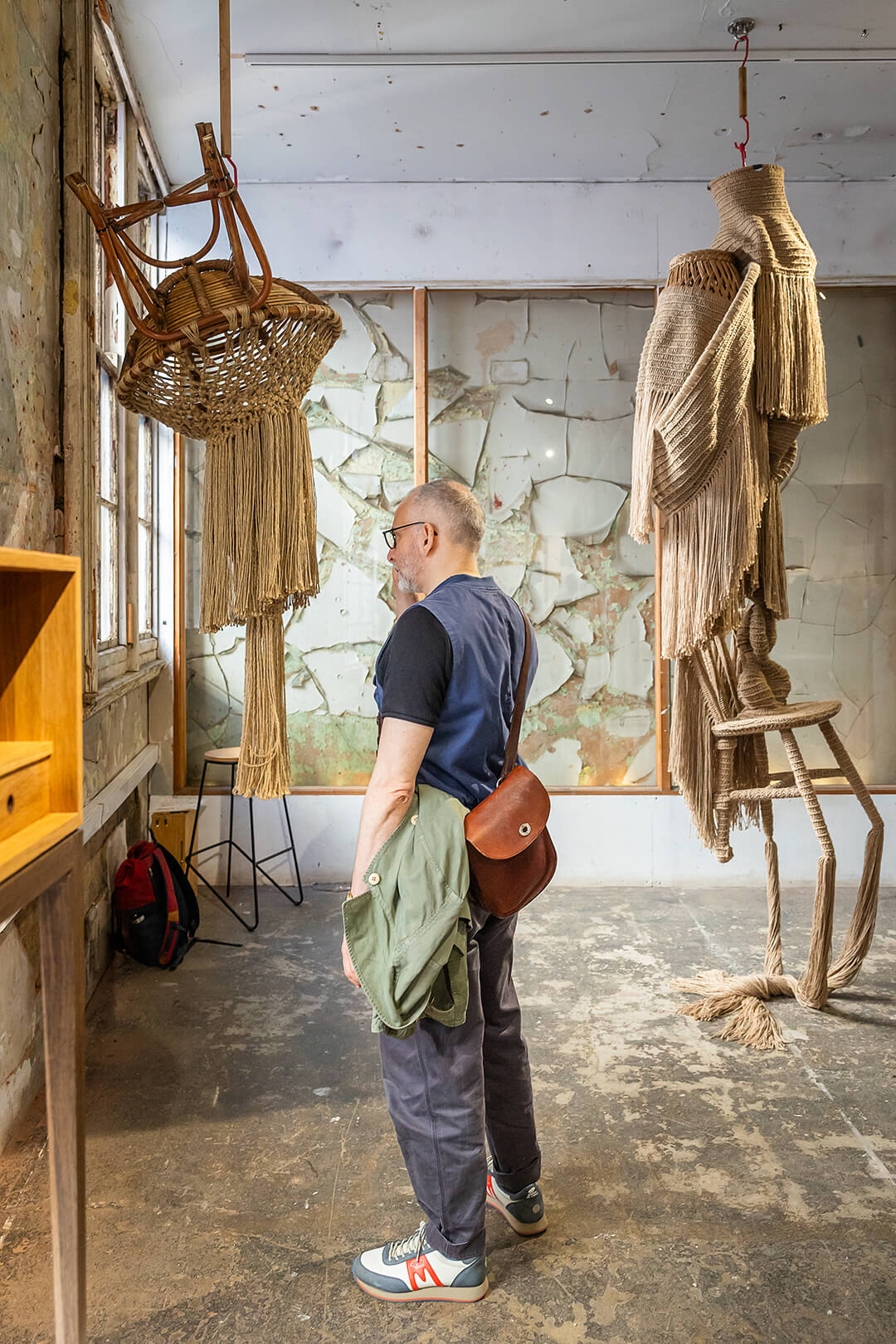
Comparing the two chapters, the designer reflects on the transition as mentioned in the press release, "In chapter 1, I focused solely on crocheted work, with no other objects used, to represent the singularity and uniformity of masking in social settings. With the 2nd, the absorption of functional or dysfunctional objects became paramount, communicating the overwhelm that follows constant masking and the sensory overload I experience as a neurodiverse person."
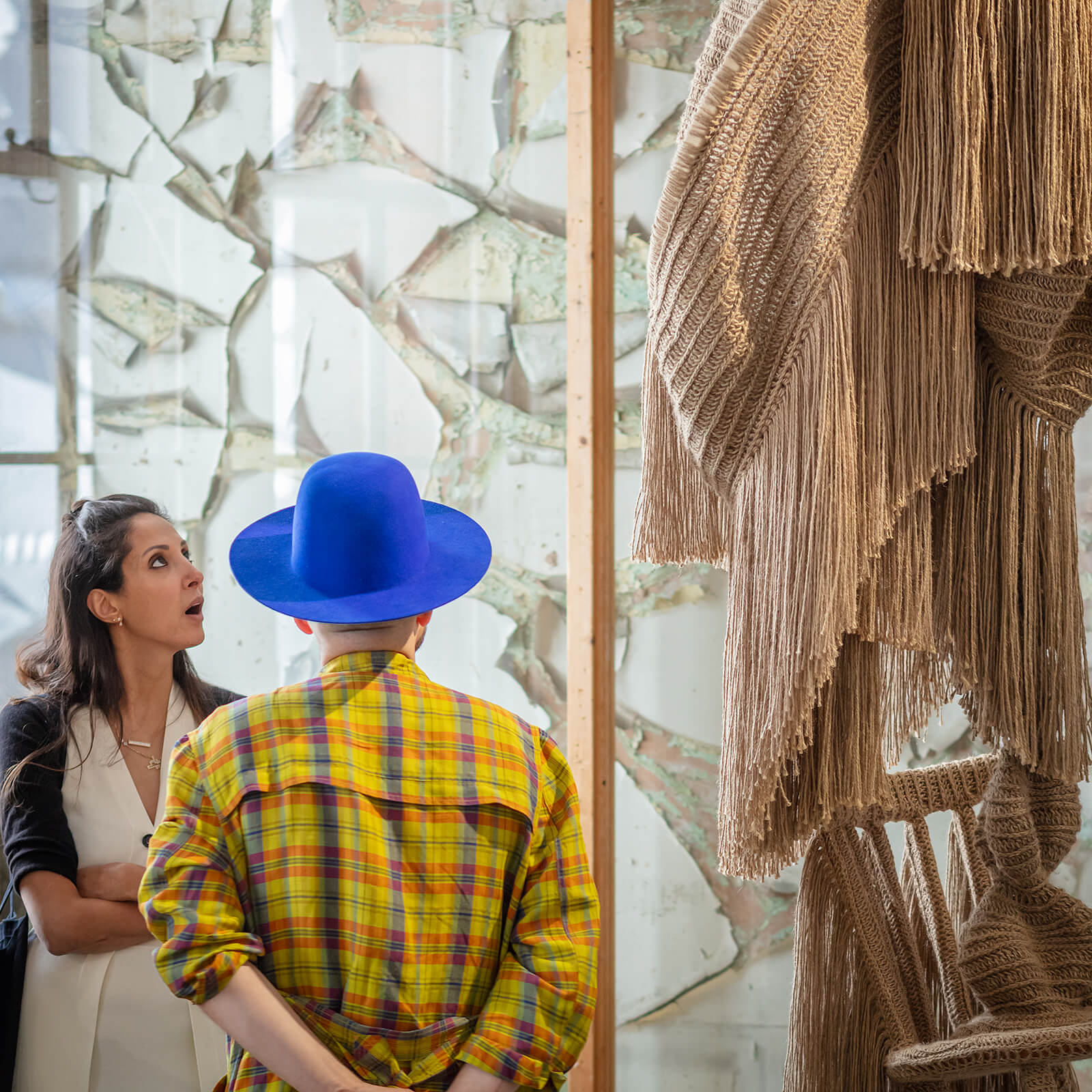
To support the development of his project, Kelly delivers creative and educational workshops in partnership with MIND, the mental health charity, Central Saint Martin’s Knowledge Exchange program and community workshops in Buckinghamshire. These workshops share the techniques Kelly uses to manage his neurodiversity through creative practice, fostering a supportive community where participants can share strengths and bridge difficulties.
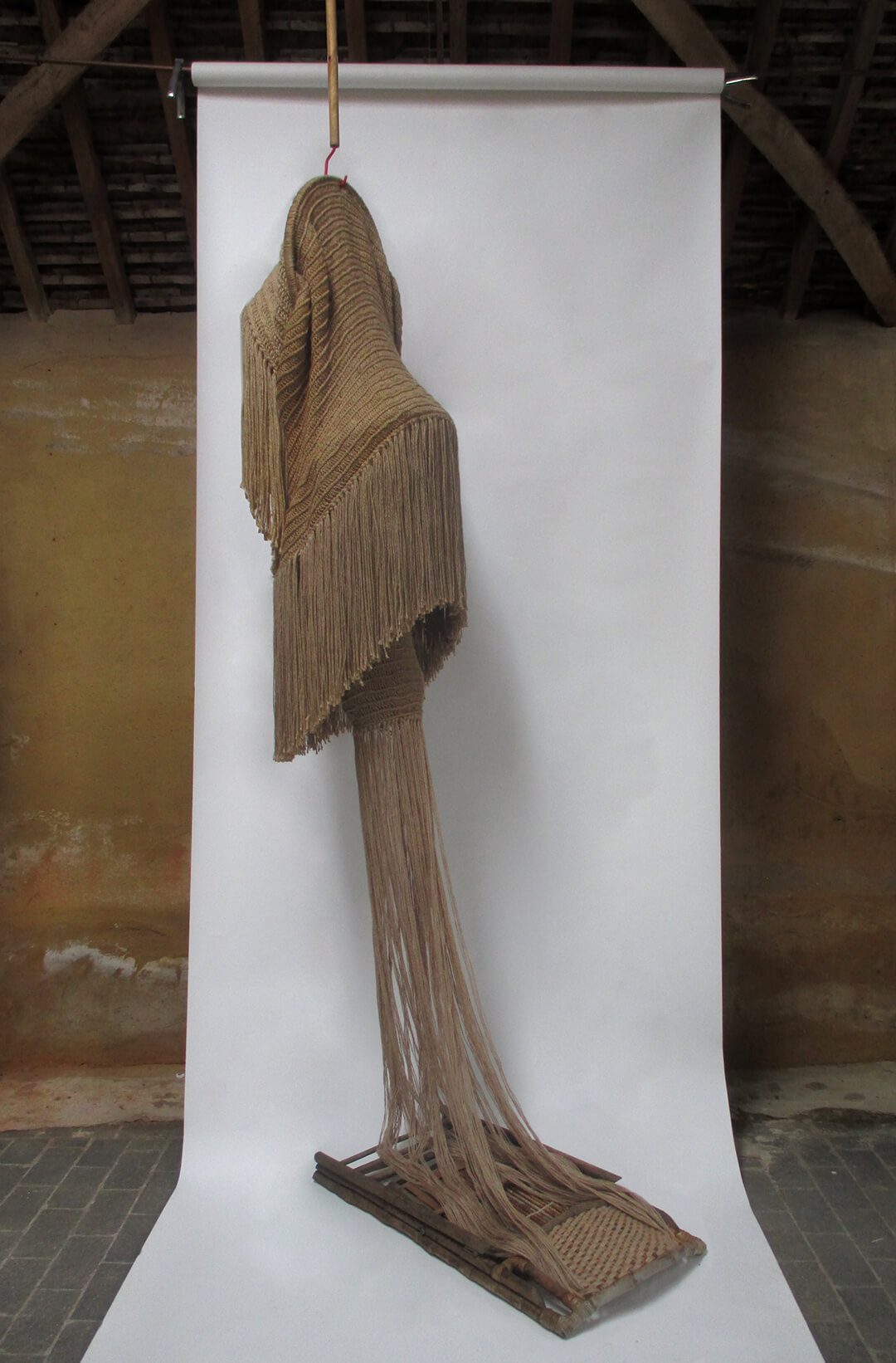
The communication design for the project is realised in partnership with designer Beatrice Sangster, while the Dis/Functional chapter continues to evolve through collaboration with furniture designer Daniel Hayden. Together, they create unique works where interwoven crochet forms envelop and transform Hayden’s chair designs. These works will be exhibited at Enso House gallery in London, United Kingdom in Autumn 2024.
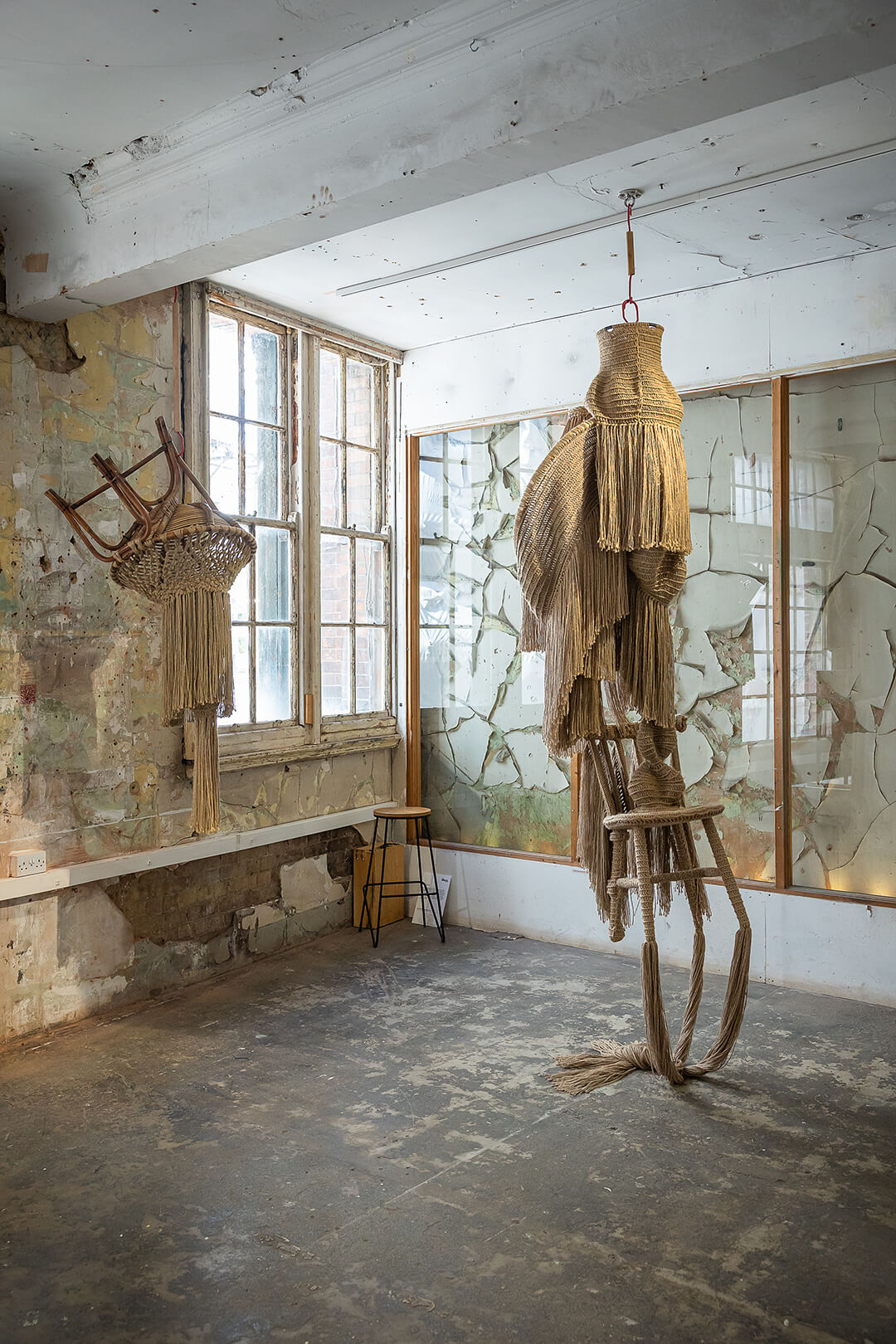
Through these diverse and intricate pieces, the Interwoven project continues to evolve, offering new insights into the lived experience of neurodiversity. The project not only showcases his artistic talent but also provides a meaningful commentary on neurodiversity. Through his sculptures, workshops, and collaborations, Kelly creates a space where the complexities of human brain function and sensory experiences are addressed with sensitivity and thoughtfulness. Each piece attests to his journey, transforming personal challenges into powerful, tangible expressions of creativity and resilience.
by Mrinmayee Bhoot Oct 09, 2025
At the æquō gallery in Mumbai, a curated presentation of the luxury furniture brand’s signature pieces evokes the ambience of a Parisian apartment.
by Aarthi Mohan Oct 07, 2025
At Melbourne’s Incinerator Gallery, a travelling exhibition presents a series of immersive installations that reframe playgrounds as cultural spaces that belong to everyone.
by Asmita Singh Oct 04, 2025
Showcased during the London Design Festival 2025, the UnBroken group show rethought consumption through tenacious, inventive acts of repair and material transformation.
by Gautam Bhatia Oct 03, 2025
Indian architect Gautam Bhatia pens an unsettling premise for his upcoming exhibition, revealing a fractured tangibility where the violence of function meets the beauty of form.
 surprise me!
surprise me!
make your fridays matter
SUBSCRIBEEnter your details to sign in
Don’t have an account?
Sign upOr you can sign in with
a single account for all
STIR platforms
All your bookmarks will be available across all your devices.
Stay STIRred
Already have an account?
Sign inOr you can sign up with
Tap on things that interests you.
Select the Conversation Category you would like to watch
Please enter your details and click submit.
Enter the 6-digit code sent at
Verification link sent to check your inbox or spam folder to complete sign up process



by Aarthi Mohan | Published on : Aug 09, 2024
What do you think?